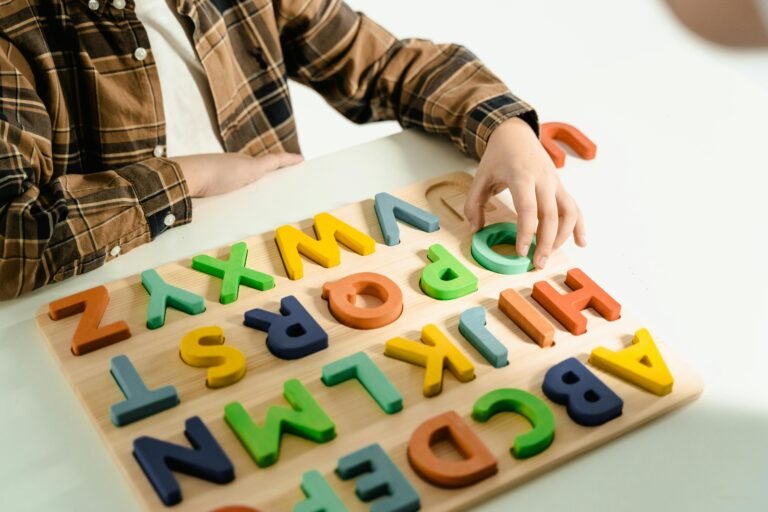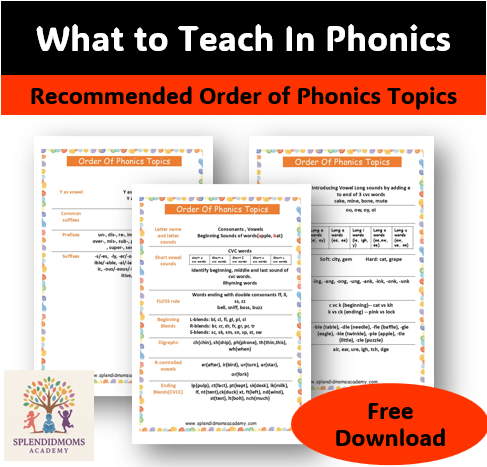The Ultimate List of Phonics Topics to Teach – From Letter Sounds to Spelling Rules
Phonics is the foundation of reading and writing, helping children decode words and build literacy skills. Whether you’re a teacher, homeschooling parent, or tutor, having a structured phonics teaching plan is essential. In this blog, we’ll explore the essential list of phonics topics in order, from letter sounds to common spelling rules, with engaging activities to make learning fun!
Don’t forget to grab your free PDF at the end of the blog—it’s a handy list of essential phonics topics for early reading. This downloadable guide outlines the key concepts in a clear, step-by-step order to support your teaching journey. Whether you’re just starting or looking to stay on track, the PDF is a great reference to keep phonics instruction organized and effective.

1. Letter Sounds (Beginning Phonics)
Before kids can read words, they must recognize letter sounds. This is the first step in phonics instruction.
What to teach:
The sounds of each letter (A-Z)
Distinguishing between uppercase and lowercase letters
Examples:
A as in apple
B as in ball
C as in cat
When introducing ABC sounds to toddlers, focus only on short vowel sounds (like the /a/ in “apple” avoid long vowel sound words like /e/ in “eagle” ) to avoid confusion. Mixing in long vowel sounds too early can make it harder for young learners to grasp basic phonics rules. Stick to consistent, simple sounds at first to build a strong foundation for reading later on.
Activities:
Sound Matching Game: Place objects in a bag (e.g., a toy dog, apple) and have kids pick one and say its beginning sound.
Letter Hunt: Hide letters around the room and ask children to find and say their sounds.
2. Vowel and Consonant Identification
Understanding vowels (A, E, I, O, U) and consonants helps kids recognize word patterns.
What to teach:
Vowels vs. consonants
Short vowel sounds (a, e, i, o, u)
Examples:
Vowels: A (apple), E (egg), I (igloo)
Consonants: B (bat), D (dog), T (top)
Activities:
Vowel Sort: Simply identifying the vowels from the group of random letters given.
Write words on cards and have kids sort them by vowel sounds.
Consonant-Vowel-Consonant (CVC) Introduction: Start blending simple sounds like c-a-t.
3. CVC Words (Consonant-Vowel-Consonant)
CVC words are the easiest to blend, helping kids read their first real words.
What to teach:
Blending letter sounds (e.g., c-a-t = cat)
Short vowel sounds in simple words
Examples:
Cat, dog, pen, sun, pig
Activities:
CVC Word Building: Use letter tiles to form words.
Word Family Sliders: Create sliders with endings (-at, -en) and change beginning letters (cat, bat, rat).
4. Floss Rule Words (Double Consonants)
The Floss Rule helps kids understand when to double consonants at the end of short vowel words.
Rule: If a word has one syllable, a short vowel, and ends in f, l, s, or z, double the last letter.
Examples:
Off, puff, hill, buzz, miss
Activities:
Floss Rule Sort: Give kids word cards to categorize into Floss Rule vs. non-Floss Rule words.
Memory Game: Match words that follow the Floss Rule.
5. Beginning Blends (L-Blends, R-Blends, S-Blends)
Blends help kids smoothly combine consonants before vowels.
What to teach:
L-Blends: bl, cl, fl, gl, pl,
R-Blends: br, cr, fr, gr, pr, tr
S-Blends: sc, sk, sm, sl
Examples:
Black, frog, skip, smell
Activities:
Blend Hunt: Find objects around the house that start with blends.
Blend Puzzles: Cut words into parts (e.g., fl + ag = flag).
6. Digraphs (Two Letters, One Sound)
Digraphs create unique sounds, which are crucial for decoding words.
What to teach:
Beginning Digraphs: sh, ch, th, wh, ph
Ending Digraphs: ck, ng, sh
Examples:
Ship, chat, thin, sock
Activities:
Digraph Bingo: Call out words with digraphs for kids to mark.
Sound Charades: Act out words with digraphs for others to guess.
7. Ending Blends
Ending blends help kids read and spell longer words correctly.
What to teach:
-nt, -st, -mp, -nd, -lk
Examples:
Jump, hand, milk, fast
Activities:
Word Chains: Change one letter to form new words (e.g., fast → fist → list).
Ending Blend Sort: Group words by their ending blends.
8. R-Controlled Vowels (Bossy R)
Why it’s important: The letter R changes vowel sounds, creating new phonics patterns.
What to teach:
ar, er, ir, or, ur
Examples:
Car, her, bird, fork, turn
Activities:
Bossy R Song: Sing a tune with words like “star, far, car.”
R-Controlled Word Hunt: Find words in books with “ar,” “er,” etc.
9. Diphthongs (Gliding Vowel Sounds)
Diphthongs combine two vowel sounds in one syllable.
What to teach:
oi/oy, ou/ow, au/aw
Examples:
Coin, toy, cloud, cow, saw
Activities:
Diphthong Dice: Roll a die with diphthongs and say a matching word.
Word Art: Draw pictures of diphthong words.
10. Long Vowel Sounds (Silent E & Vowel Teams)
Why it’s important: Long vowels appear in many advanced words.
What to teach:
Silent E (e.g., cake, bike)
Vowel Teams (ee, ea, ai, ay, oa, oe)
Examples:
Bake, feet, rain, boat
Activities:
Magic E Wand: Add an “e” to CVC words (e.g., cap → cape).
Vowel Team Puzzles: Match vowel pairs to complete words.
11. Common Spelling Rules
Spelling rules help kids write words correctly.
What to teach:
Soft C & G (cent, gem)
K vs. CK (back, kid)
Y as a Vowel (happy, sky)
Activities:
Rule Sorting: Group words by spelling patterns.
Spelling Bee: Practice words with different rules.
Teaching phonics step-by-step ensures children build strong reading skills. Start with letter sounds, move to blends and digraphs, and gradually introduce long vowels and spelling rules. Use interactive activities to keep lessons engaging!
#Phonics #ReadingSkills #EarlyLiteracy #TeachingPhonics #Homeschooling #PhonicsActivities #SpellingRules #CVCWords #Digraphs #Blends #BossyR #LongVowels
By structuring phonics lessons in this order, you’ll help children become confident readers. Happy teaching!

